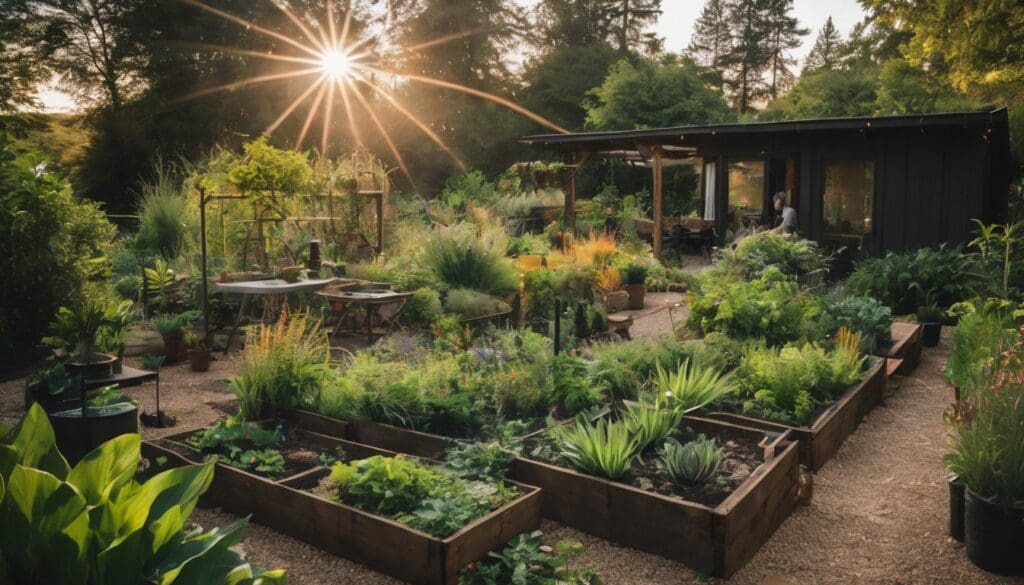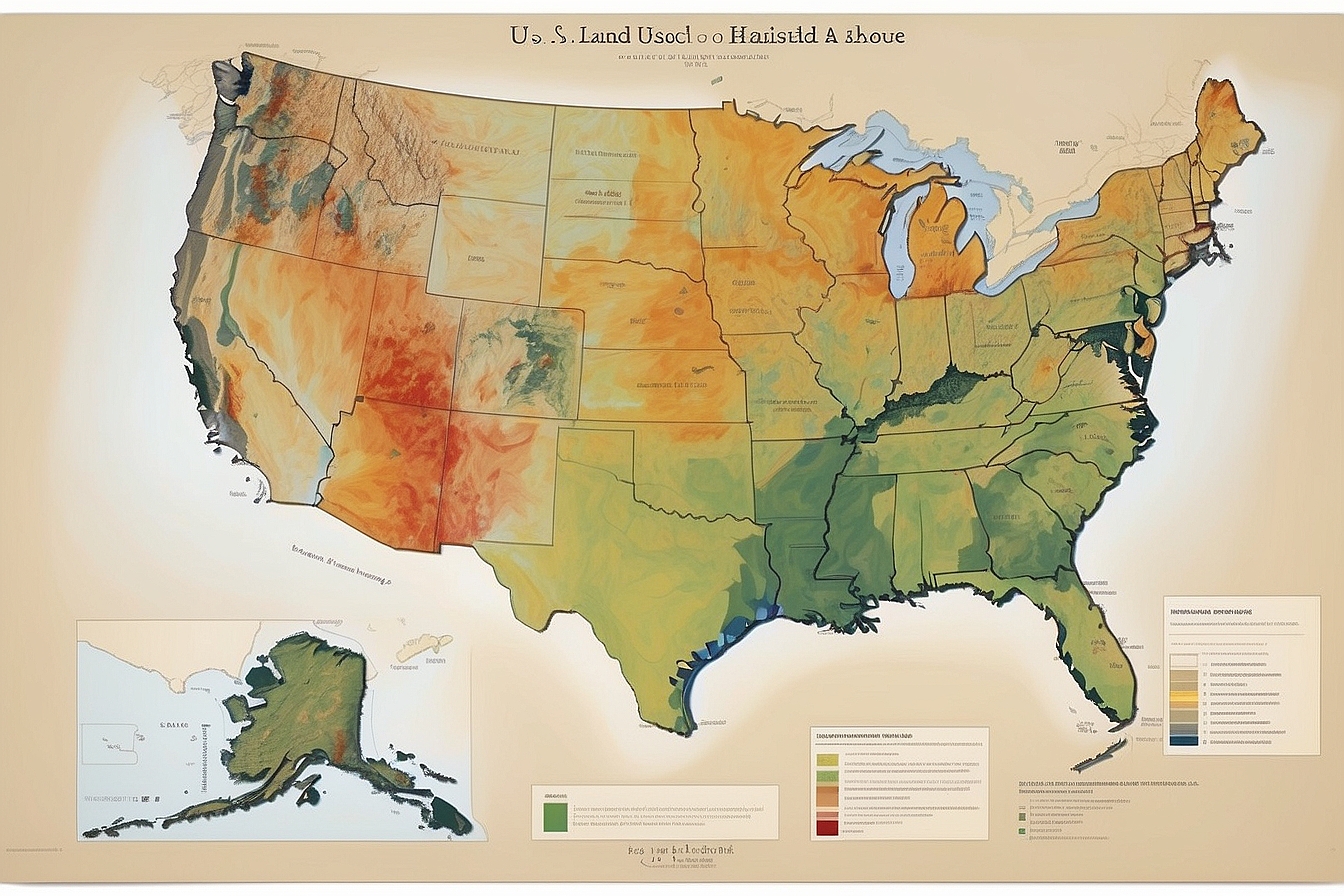It’s a common thread that binds us, this concern for the toll our contemporary existence takes on the delicate tapestry of Earth. Like many others, we’ve wrestled with how to tread lightly on this planet we call home and found solace in permaculture – it’s like finding an old friend in the fight against environmental degradation.
This piece aims to shed light on how embracing permaculture principles can breathe new life into our ecosystems and pave the way for living sustainably. Let’s embark together on a journey towards a verdant future.
Key Takeaways
- Permaculture is a multifaceted approach that includes organic gardening, agroforestry, and sustainable living to create ecosystems that are in harmony with nature.
- By focusing on principles like energy cycling and water conservation, permaculture helps preserve natural resources and promotes environmental stewardship.
- Diverse planting, renewable energy use, efficient waste management strategies, and ecological building design are key components of permaculture systems.
- The practice offers significant socio – economic advantages by bolstering food security, generating jobs locally, and strengthening community bonds.
- Employing permaculture practices enhances the resilience of ecosystems against climate challenges while supporting biodiversity and soil regeneration.
Understanding Permaculture
Permaculture is a sustainable design system that integrates ecological principles, organic gardening, agroforestry, and ethical living to create harmonious and regenerative ecosystems.
It focuses on the holistic management of resources and aims to mimic natural patterns for efficient and resilient food production.
Definition of Permaculture
Let’s think of permaculture as the art and science of creating sustainable ecosystems that mirror the patterns found in nature. It’s about designing agricultural systems, social arrangements, and building practices that align with natural processes to create self-sustaining environments.
We cultivate land by means of regenerative design, placing emphasis on biodiversity conservation and renewable energy.
We take cues from ecological principles to nurture an environment where organic farming thrives alongside natural building and green architecture. In our approach to permaculture, we combine traditional knowledge with modern innovations like biomimicry to forge a path toward environmental sustainability.
This method is a comprehensive roadmap for achieving ethical living while nurturing the planet’s resources responsibly.
Principles of Permaculture
Having understood the definition of permaculture, it’s essential to delve into its principles. These principles form the foundation for designing sustainable ecosystems:
- Observation: Careful observation of natural patterns to inform sustainable design.
- Designing from Patterns to Details: Start with the big picture and gradually work down to finer details.
- Integration: Create systems that work together harmoniously, mimicking natural ecosystems.
- Use Edge Effects: Utilise the benefits where two ecological communities meet.
- Renewable Resources: Emphasise the use of renewable materials and energy sources.
- Energy Cycling: Design systems that recycle and reuse resources within the ecosystem.
- Diversity: Encourage diverse species and elements within a system for resilience and productivity.
- Natural Succession: Plan for changes over time by recognising ecological succession.
Key Components of Permaculture
After understanding the principles of permaculture, it’s essential to delve into the key components that form the foundation of sustainable ecosystems. These include:
- Polyculture farming: Cultivating a variety of crops in one area to enhance biodiversity and reduce reliance on chemical inputs.
- Water harvesting and conservation: Implementing systems to capture rainwater and store it for irrigation, reducing dependence on external water sources.
- Agroforestry: Integrating trees and shrubs with crops to mimic natural ecosystems, enhance soil fertility, and provide habitat for beneficial organisms.
- Soil building techniques: Utilising methods such as composting, mulching, and cover cropping to improve soil structure, fertility, and water retention.
- Renewable energy integration: Incorporating solar panels, wind turbines, or other renewable energy sources to power farm operations sustainably.
- Livestock integration: Introducing animals into the system for nutrient cycling, pest control, and enhancing overall resilience.
- Waste management strategies: Implementing practices such as composting and recycling to minimise waste and maximise resource efficiency.
- Ecological building design: Constructing structures using natural materials and passive design strategies to minimise environmental impact.
- Community engagement: Fostering connections with local communities for mutual support, knowledge sharing, and collective action towards sustainability goals.
Benefits of Permaculture
Permaculture offers numerous benefits, including ecological and environmental advantages such as improved soil health, increased biodiversity, and reduced water usage. It also brings socio-economic benefits by providing local food security, creating job opportunities, and fostering community resilience.
By enhancing sustainability in ecosystems, permaculture contributes to the well-being of both people and the environment.
Ecological and environmental benefits
Permaculture offers significant ecological and environmental benefits. By implementing sustainable agricultural practices, such as organic farming and agroforestry, permaculture promotes biodiversity and helps conserve natural resources.
It also contributes to creating healthier ecosystems by reducing soil erosion, preventing water pollution, and mitigating climate change through carbon sequestration.
Additionally, the design principles of permaculture emphasise the use of renewable energy sources, waste reduction techniques, and land regeneration methods. This approach fosters environmental stewardship and encourages sustainable living practices that minimise the ecological footprint while promoting long-term resilience in our ecosystems.
Socio-economic benefits
Permaculture practices contribute to socio-economic benefits by promoting local food production, reducing reliance on industrial agriculture, and creating employment opportunities within communities.
By implementing permaculture principles such as agroforestry and sustainable land management, individuals can develop diversified and resilient systems that improve food security and economic stability.
Furthermore, permaculture techniques like green building and natural ventilation can lead to cost savings on energy consumption and reduce the environmental impact of construction projects.
These approaches not only benefit the environment but also create a more sustainable economy for future generations.
In addition, incorporating permaculture into urban planning and design can enhance community well-being by providing access to locally grown produce, reducing food transportation costs, and fostering social connections through shared gardening initiatives.
Enhancing sustainability in ecosystems
To enhance sustainability in ecosystems, we integrate diverse plants and trees to create resilient and productive landscapes. Using permaculture techniques, we nurture biodiversity, improve soil health, and conserve water resources.
By employing sustainable practices like composting, mulching, and crop rotation, we can regenerate the natural balance of ecosystems while fostering food security.
Implementing permaculture principles promotes thriving habitats for wildlife, reduces reliance on harmful chemicals, and minimises waste. Harnessing the power of nature’s patterns through ecological design fosters resilience in ecosystems against environmental stresses.
This approach ensures that our actions have a positive impact on both the environment and communities around us.
Developing regenerative systems that function harmoniously with nature enables us to build healthier environments for future generations.
Conclusion
FAQs
1. What is permaculture in sustainable agriculture?
Permaculture integrates green design with ecosystem management to develop lasting agricultural systems that work with nature’s patterns.
2. How does permaculture benefit the environment?
By applying principles of agroecology, permaculture creates productive landscapes that support biodiversity and reduce our carbon footprint for a healthier planet.
3. Can I use permaculture techniques in my own garden?
Absolutely! You can adopt simple permaculture practices to make your garden part of a self-sustaining ecosystem, contributing positively to local wildlife and soil health.
4. Does embracing permaculture mean giving up modern conveniences?
Not at all! Permaculture design blends traditional knowledge with innovative approaches, enabling you to enjoy modern comforts while being eco-friendly and promoting sustainable living.





